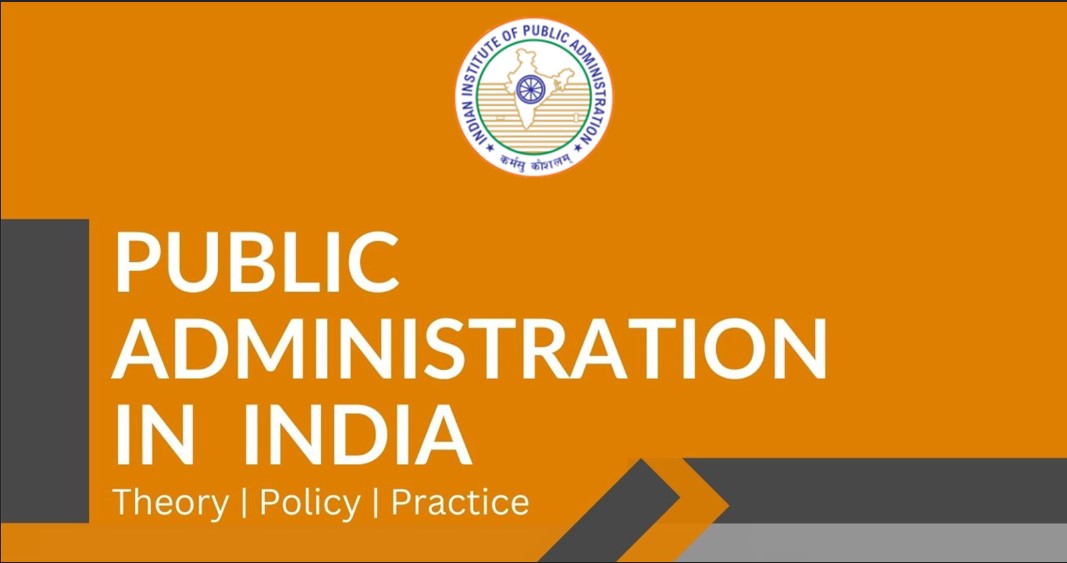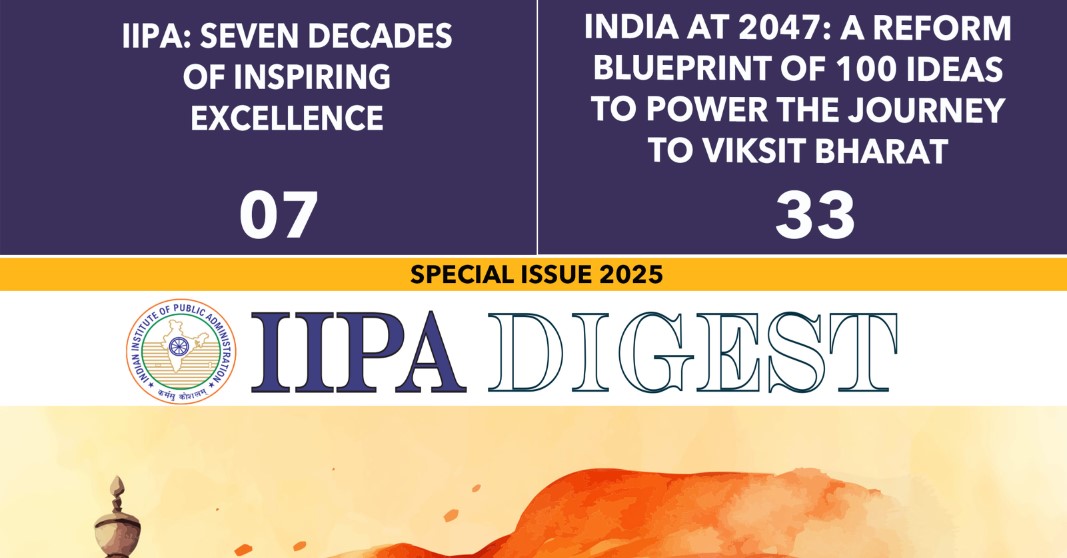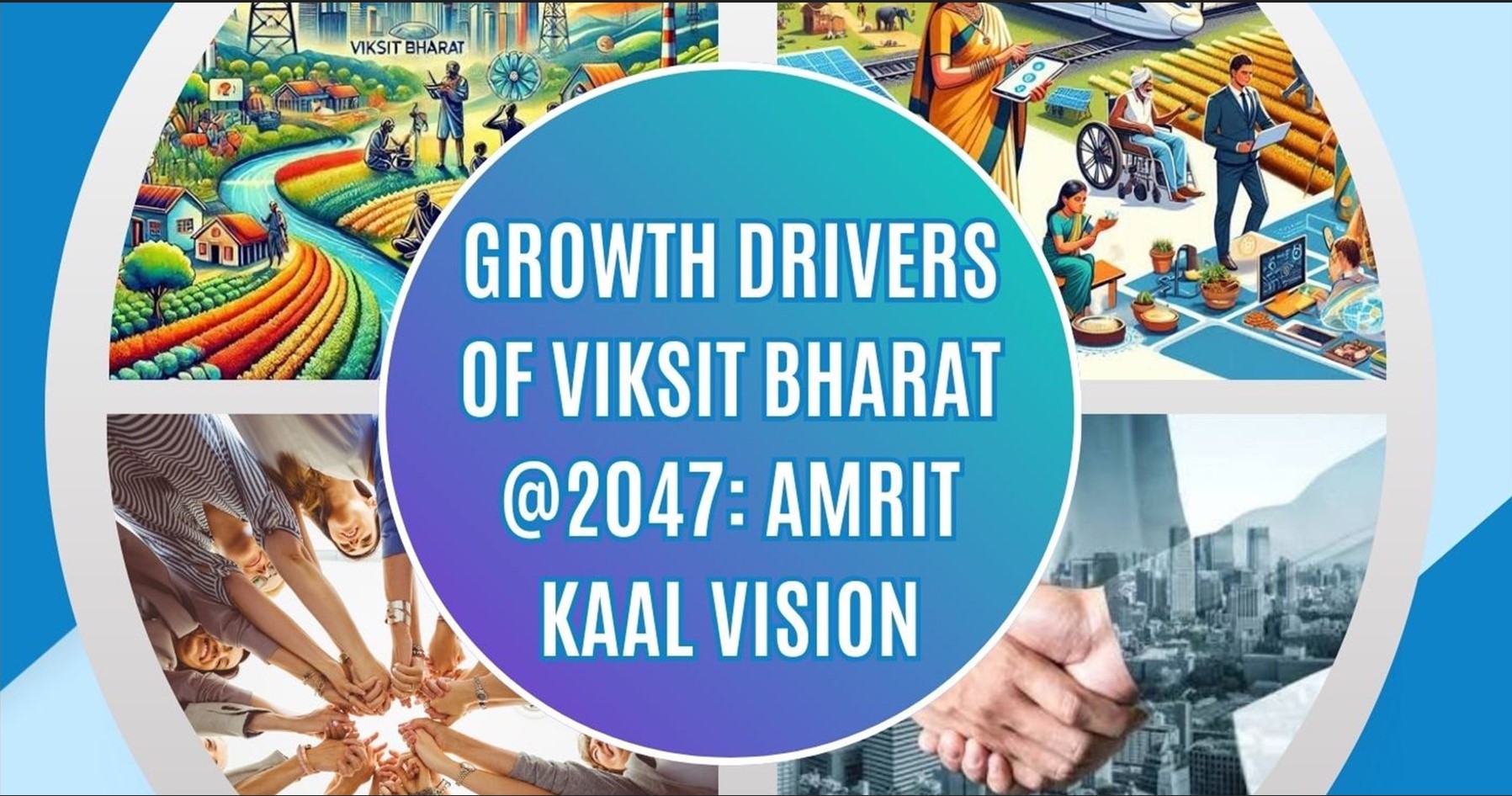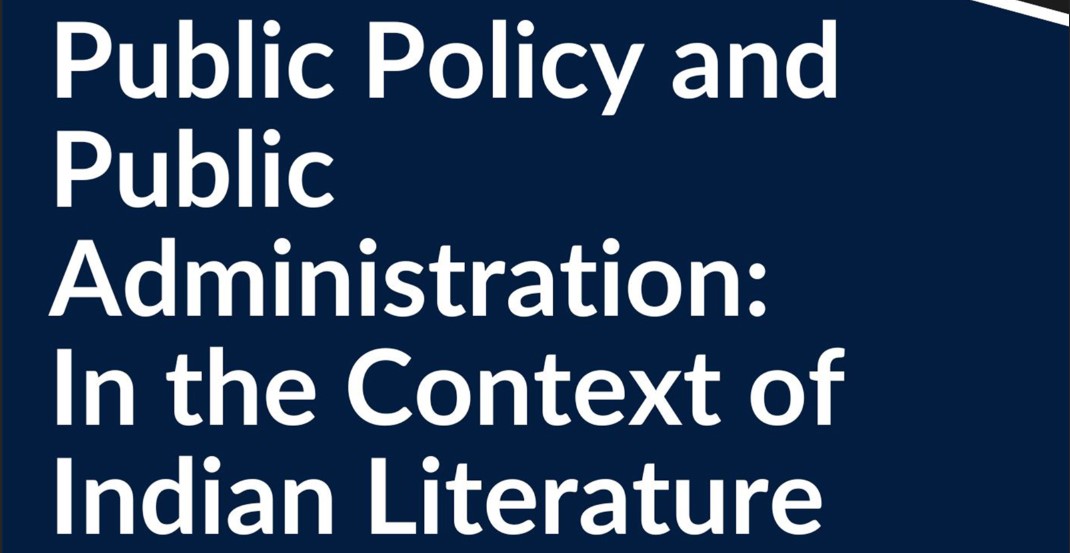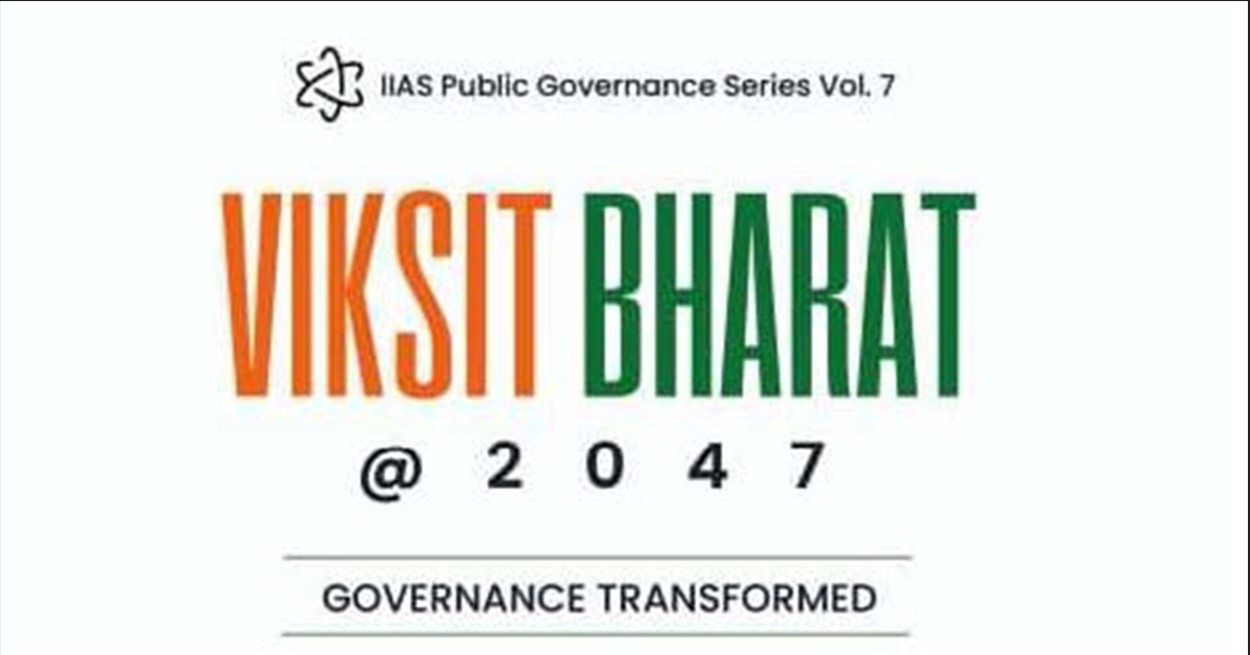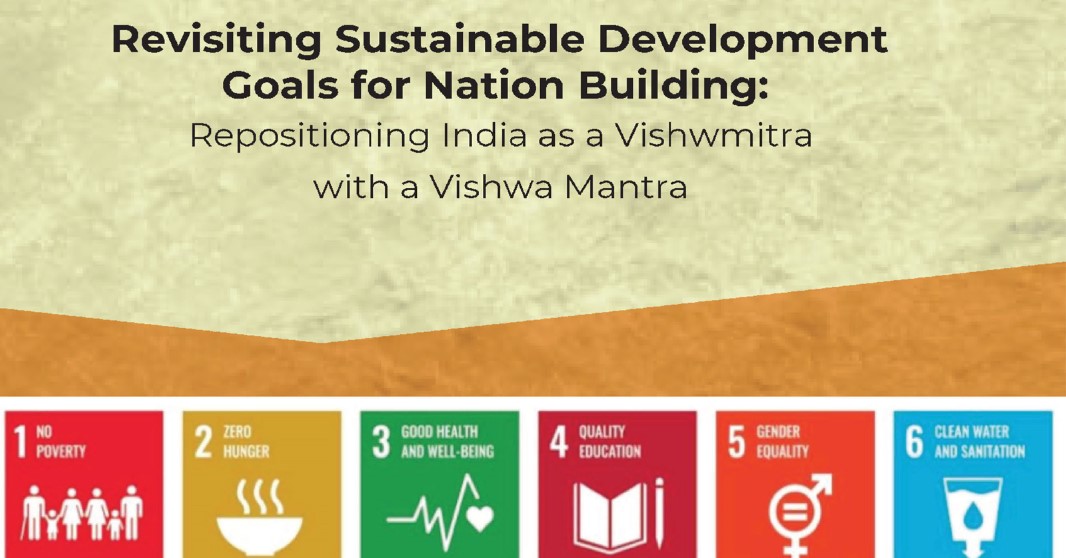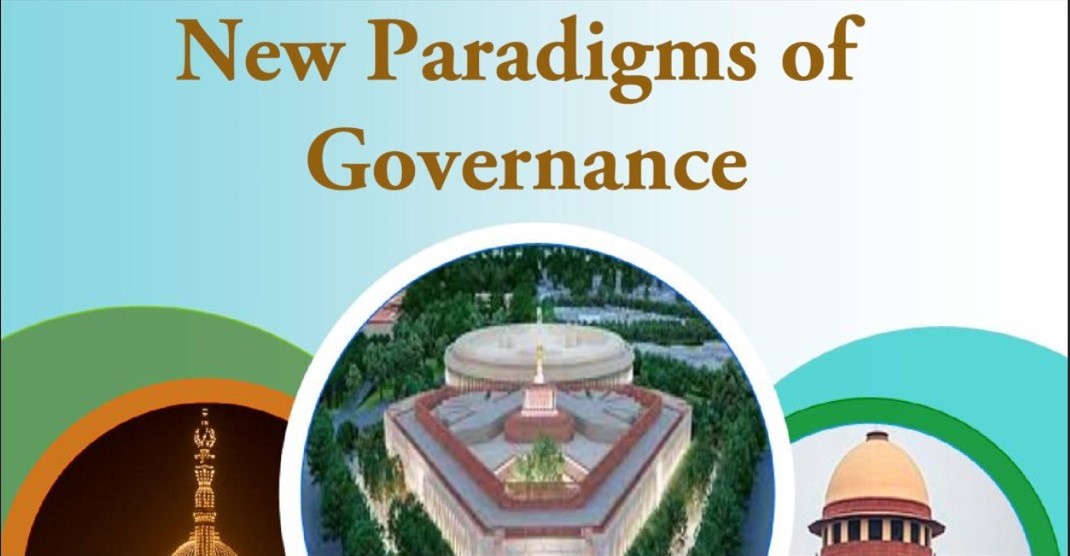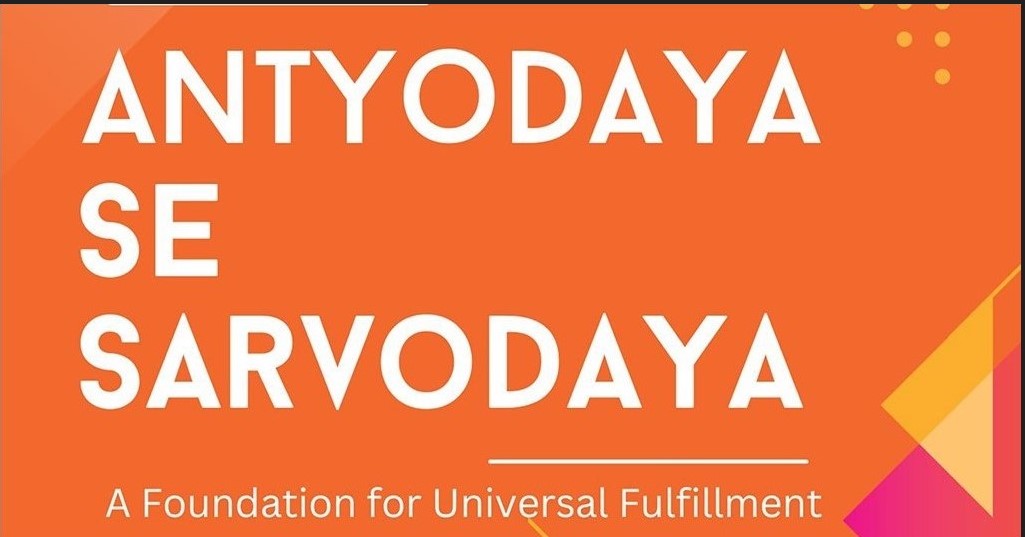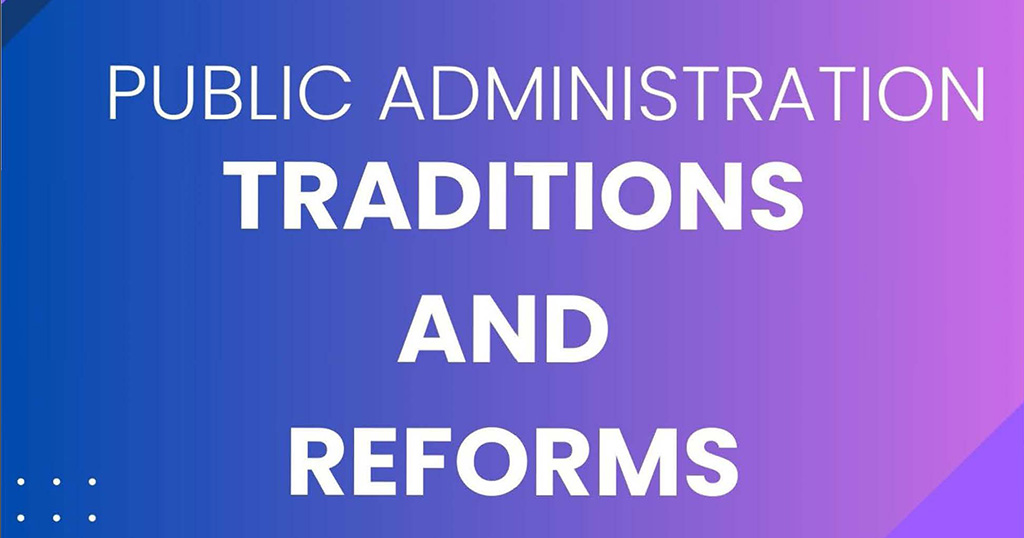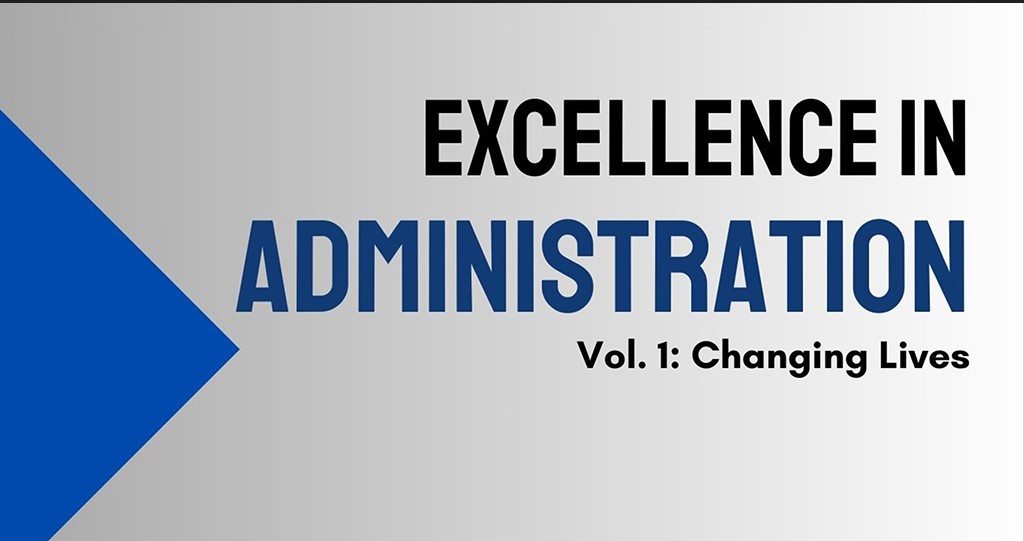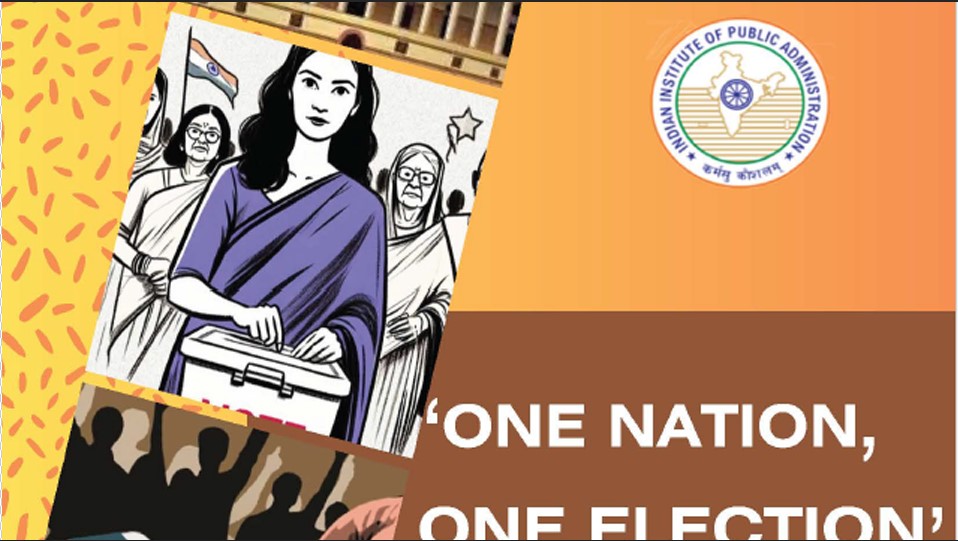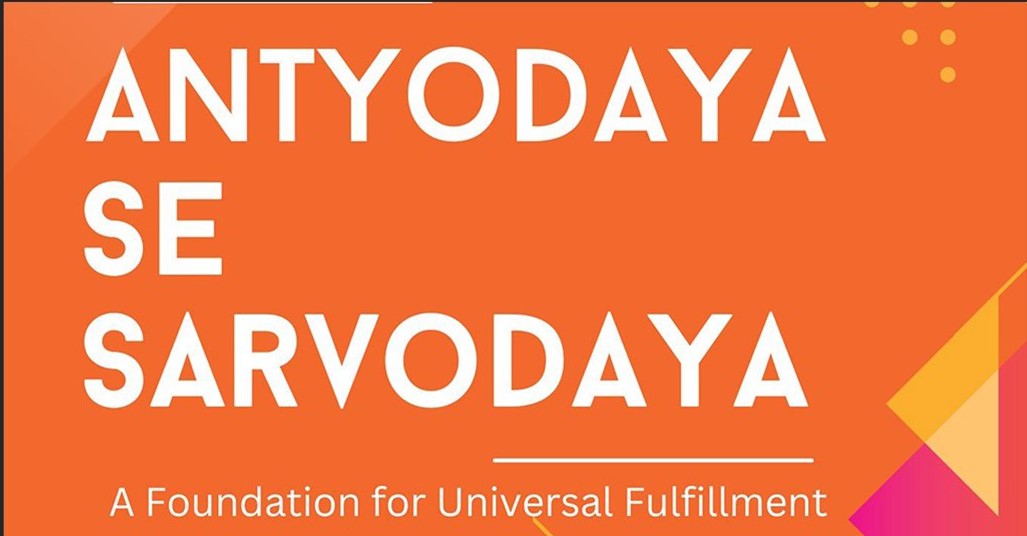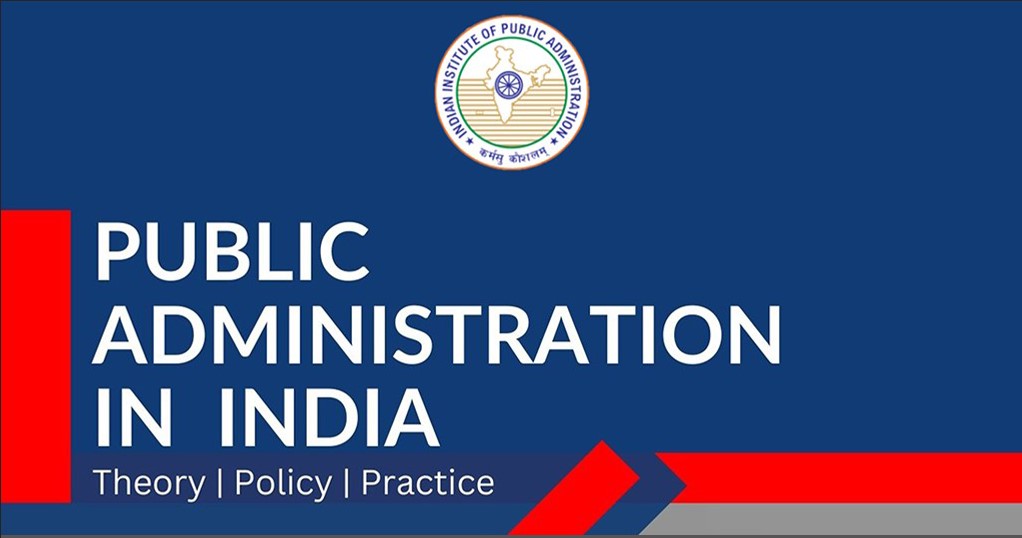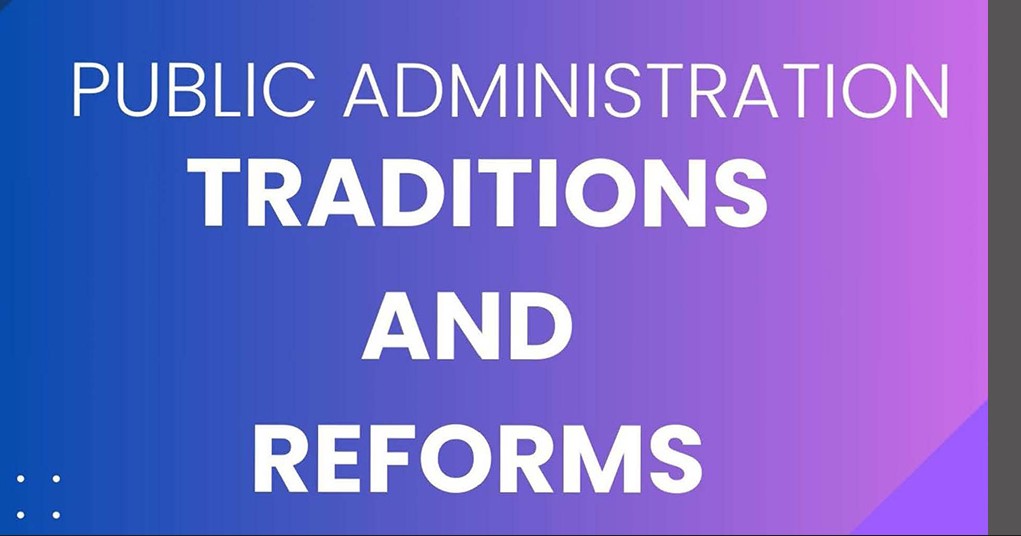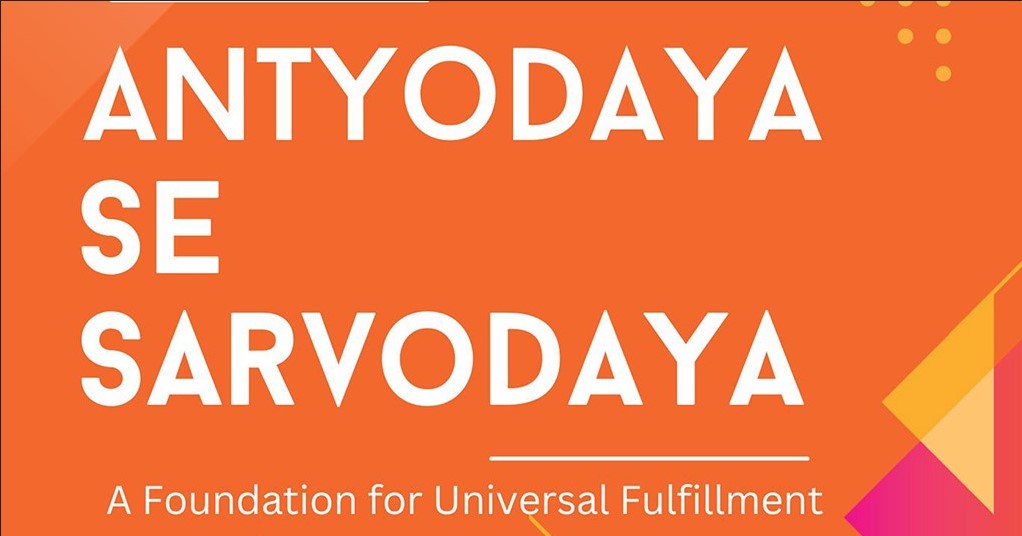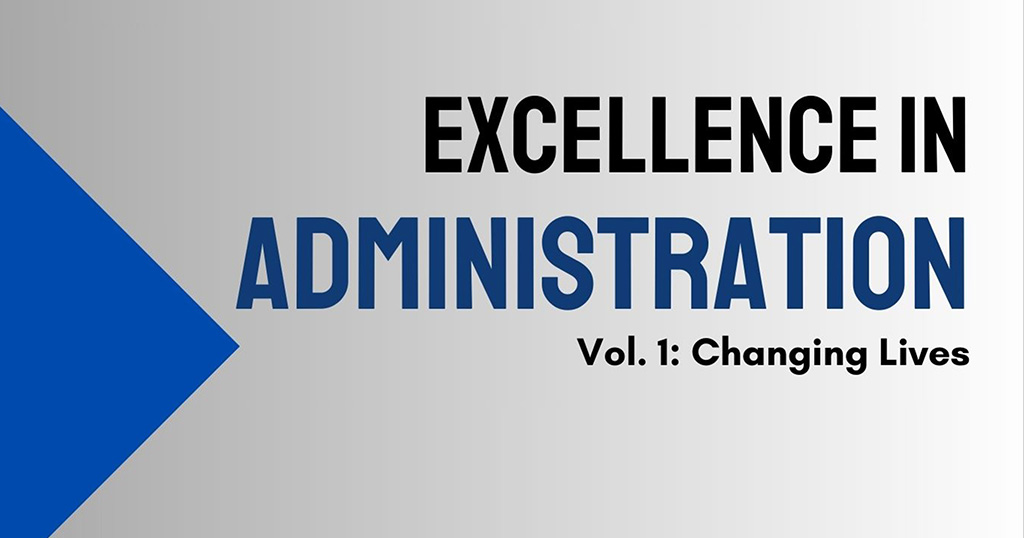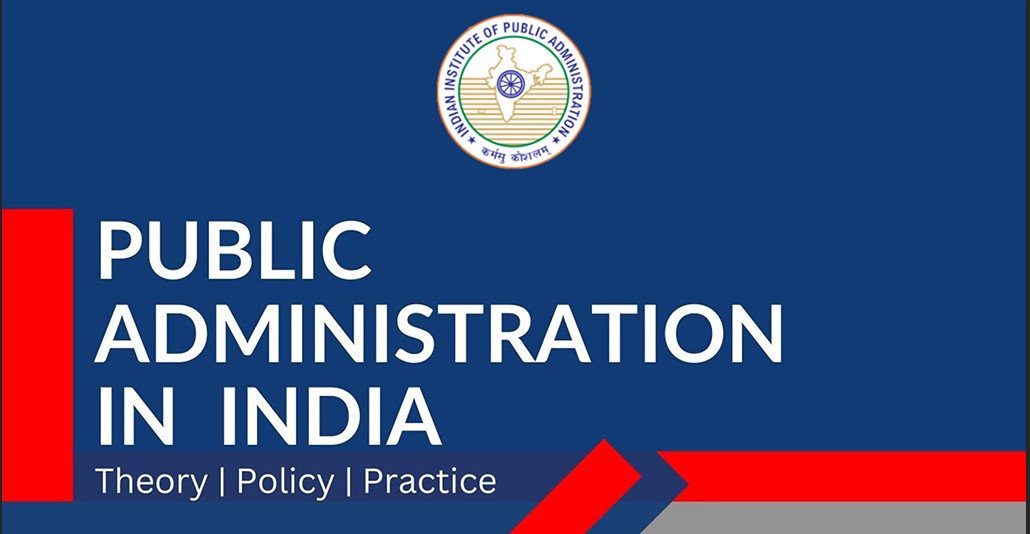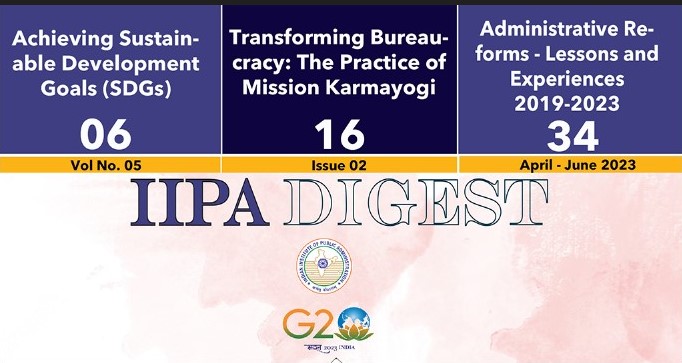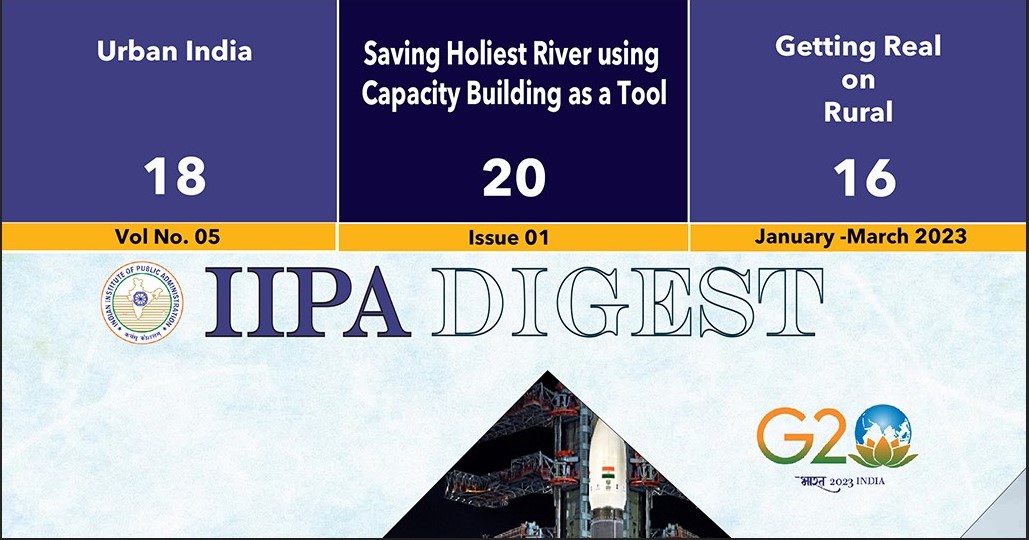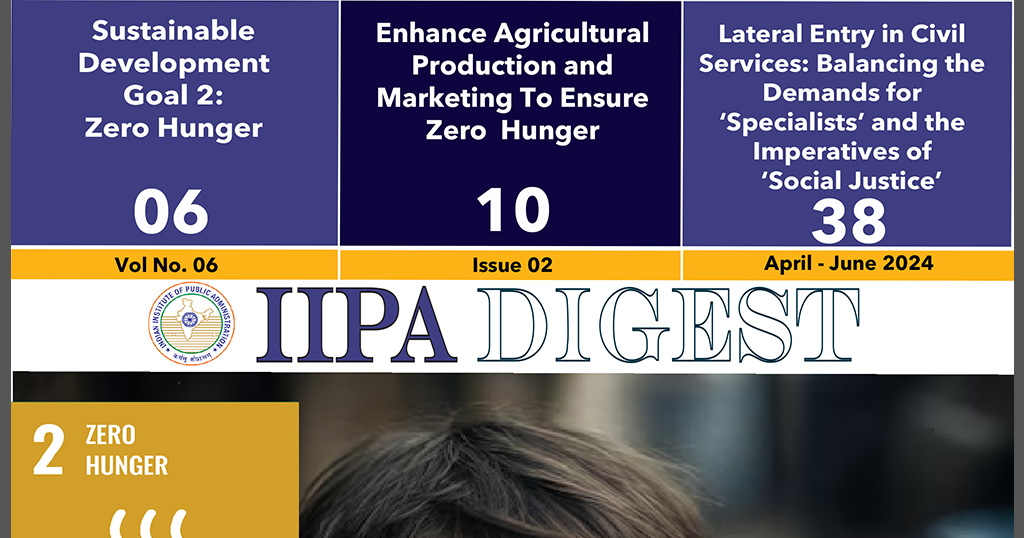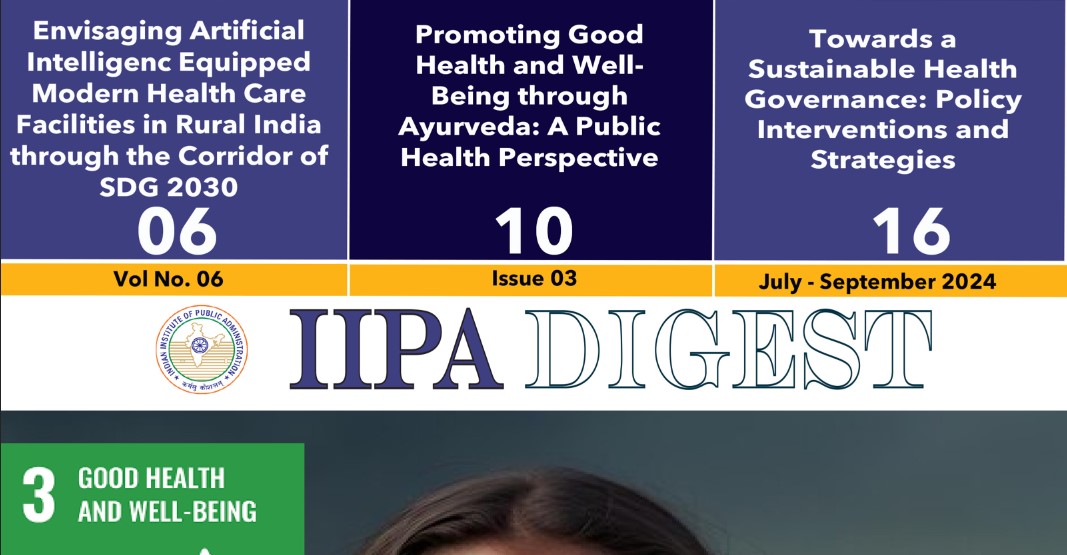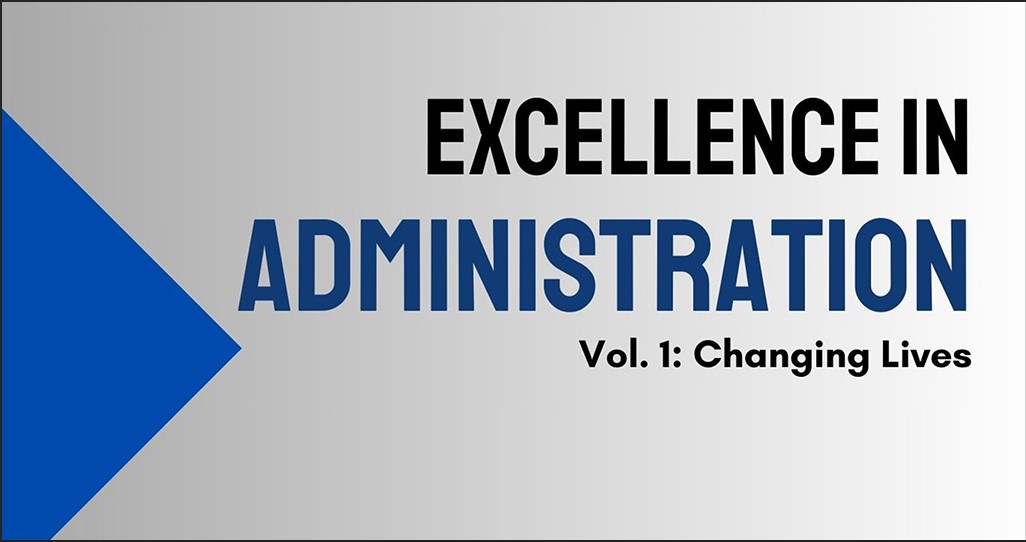Public Administration: Meaning, Nature, Scope and Significance
Abstract
Public administration is the cornerstone of modern governance. It refers to the organization, management, and implementation of government policies and programs, carried out by public officials and institutions. As a vital mechanism of the state, public administration not only ensures the effective delivery of services to citizens but also upholds the principles of accountability, transparency, and rule of law. In a rapidly changing world, its role has become increasingly significant in addressing complex social, economic, and environmental challenges. Governance is described as the way an organization takes itself and the processes and structure that are used to realise its goals. Governance is also crucially concerned with how organizations relate to each other, how they relate to citizens and the way in which citizens are given a voice. The essential duty of governance is to effectively and equitably implement what is called the social contract. Changeover to liberalization and economic reforms and to new types of managerial set-ups is a complex and difficult task which demands a highly competent, well informed and caring administration. The concept of “governance” is the process of decision-making and the process by which decisions are implemented (or not implemented). It also implies that goals must be set out as clearly as possible. For whatever policies the government follows goals should be laid out in detail and the steps toward achieving these goals should be measured as clearly as possible. Then government agencies should follow the policies that seem most appropriate to achieve these goals, modifying the policies as necessary terms of the best systematic measures of performance available. When goals are clear, when performance is regularly monitored and measured and when those in the state agencies feel that they have a say in how policies are implemented, the goals are more likely to be achieved, and citizens are more likely to appreciate the roles of the government. This paper is an attempt to understand the meaning, nature, scope and significance of Public Administration, validating the facets of good governance advanced through schemes and policy rubrics endorsed by the present Government of India. It also endeavours to make suggestions and recommendations which could serve as a catalyst for a “New Bharat” echoing with the spirit of ‘Ek Bharat Shresth Bharat’.
1. Introduction
Public Administration is an essential part of a society and a dominant factor in life in the modern age. With the expansion of the activities of modern state, public administration has come to occupy great importance in the modern society. The effort of every state to create social welfare has intensified the importance of the subject t. It is, a creative factor, its motto being the ‘welfare of man’. It has been rightly described as the 'heart of modern civilization". Public Administration is of pivotal importance in developing countries, like India, which are engaged in a massive effort to lift themselves from a state of poverty to a level of genera happiness and prosperity. It is the field of study and practice concerned with the implementation and management of government policies and programs. It plays a crucial role in the functioning of government institutions, as it ensures that laws, regulations, and public policies are effectively carried out to serve the needs of society. Public administration involves various activities such as decision-making, resource allocation, and public service delivery, with the primary aim of promoting the public good and ensuring the well-being of citizens. At its core, public administration bridges the gap between policy-making and public service, ensuring that the decisions made by government bodies translate into tangible benefits for the people. It encompasses a wide range of tasks, from managing public finances to overseeing public health, education, law enforcement, and infrastructure. Public administrators are responsible for managing the complex web of government functions and coordinating the efforts of various agencies and departments to achieve desired outcomes. Ultimately, public administration is about managing public resources efficiently, maintaining accountability, and ensuring that government actions align with the values of transparency, justice, and service to the community.
Public Administration has larger capacity for different fields of administration. It emerges in political system for accomplishing goals and objectives formulated, implemented by political representatives. Public administration is also known as government administration. Public means government therefore the focus of public administration is on public bureaucracy that is bureaucratic organisation of the government.
1.1. Defining Public Administration
Public Administration refers to a process of doing and getting things done in a government organisation. It is the management of affairs in an organization in order to achieve predetermined targets.
According to Woodrow Wilson, “Public Administration is detailed and systematic execution of law. Every particular application of law is an act of administration. He further says administration is the most obvious part of the government; it is the government in action, it is the executive, the operative the most visible side of the government.”
According to Luther Gulick, “Public Administration is that part of the science of administration which has to do with government thus concern itself primarily with the executive branch where the work of government is done, though there are obviously problems in connection with the legislature and judicial branches.”
According to ‘James P. Pfiffner’, “Administration is an organization and direction of human and material resources to achieve desired ends”.
According to ‘Marshall E. Dimock, “Administration is concerned with "what and, how' of the govt. The ‘what’ is the subject matter, the technical knowledge of the field which enables an administrator to perform his task and ‘how’ the technique of management is, principles according to comprehensive programmes are carried through h a process”.
According to ‘Woodrow Wilson’ "Public Administration is detailed and systematic application of law. Every particular application of law is an act of Administration”
1.2. Nature of Public Administration
Public administration is divided into two divergent views by scholars viz. Integral and managerial view. According to Integral view, Public Administration consists of all the activities which are undertaken to accomplish the given goals. Public administration involves technical, clerical and manual activities. Thus, administration constitutes all activities of all persons from top to bottom. Managerial view, public administration involves only the managerial activities and not the technical, clerical and manual activities which basically are non – manual activities. This approach only involves activities of only the top persons. Simon, Smithburg, Thompson and Luther Gulick adopt this view. Administration according to this view is same in the entire sphere as the managerial techniques are same in the entire sphere as the managerial techniques are same in all the fields of activities. Public Administration is thus a detailed and systematic execution of public law. Public Administration is a segment of the wider field of Administration. It is Administration concerned mainly with.
1. The Activities of the Government: As such public Administration is concerned with government in action It is the non-political machinery of the government carrying on its work for the welfare of people according to the laws set up by the state. It refers to by the permanent executive and includes all those activities which are of public importance.
2. Public Administration is concerned with the People: Public Administration has to do with people and not things. Administration is essentially a matter of human relationships. An Administrator is neither a philosopher nor a politician, he is one who manages, organizes and ensures that things are working in a co-ordinated manner under the guidance of specific rules and laws.
3. Public Administration is distinct from Private Administration: Private Administration refers to management of affairs by Private organizations, individuals, club, company or corporation. Whereas by management of affairs by a government organization is public administration. Thus the Administration of post offices, the supply of electricity by the State Electricity Board, etc. are all acts of public administration.
a) Political Direction: Public Administration is subjected to political direction and not private administration. The public administration has to carry the orders of the political executive. On the other hand, private administrator pursues ends of this own choice. Though sometimes the government makes rules about the quality, quantity and price of the goods but that is only in times of emergencies. Thus the likings or disliking of the administration while carrying out a public policy is immaterial, but it is equally valuable in the case of private administration.
b) Profit Motive: Public Administration works with a motive of public service. Whereas a private administration is profit oriented. No private entrepreneur would ever involve itself in affairs which involve maximum loss and minimum profit. On the other hand, public administration invests in huge projects and risky plans. They are ready to bear loss at the cost of public welfare. Thus the motive behind the public policy is welfare of people, whereas in private administration self-interest is the sole motive.
c) Nature of Functions: The scope of activities under private administration is comparatively narrow than under public administration. Public Administration deals with multifarious (functions) needs of the people e.g. it maintain railways, provides post and telegraphs, maintains hospitals, etc. Whereas functions of private administration does not cover those aspects of human life. It is mostly concerned with the people, e.g., manufacture of cloth, supply of sugar, etc.
d) Public Responsibility: Public administration is responsible to the people it serves. The public servants are to act in accordance with the wishes of the people. On the other hand, private administration does not owe any responsibility to the public, as the public administration owes. Public accountability is one of the most striking features of public administration, a feature which is absent in private administration.
e) Uniform Treatment: Under Public Administration every official has instructions to treat all people equally. One cannot discriminate between men and a man. It has to abide by the rules of administration. Whereas private administration need not worry about this treatment basis.
f) Organization: The principle of organization is common to both public and private administration. To quote 'Huxley', "The state lives in a glass house, we see what it tries to do and all its failures, partial or total. But private enterprise is sheltered under good opaque bricks and mortar."
g) Efficiency: Some thinkers feel that private administration is conducted upon a level of efficiency superior to that of public administration. The people regard private administration more efficient which enjoys certain advantages over public administration which is marked by red-tapism, extravagance, corruption and inefficiency. In private administration the incentive of more profits impels the individual to devote himself wholeheartedly in his business. This incentive is lacking in public administration.
h) Service and Cost: In public administration only such amount of money is raised by taxation which is necessary for rendering of the service i.e. there is an intimate relationship between the services rendered and cost of services. Whereas in private administration income often exceeds expenditure otherwise there would be no profit.
i) Financial Meticulousness: Public administration has to be very cautious in financial matters. The officers are accountable to the legislature even for a single penny they spend. The Private administrator on the other hand keeps full control on the finances. He is not accountable to anybody else. The source of finance of Public Administration is public's money; whereas the source of finance of the private administration is individual's own effort; and money.
j) Social Prestige: The Public administration carries, perhaps a greater social prestige than his private counterpart. One unit of private business does not have such importance and value as one unit of public administration. Private business is necessary as a whole and as a part too. Thus it can be said that public and private administration are the two species of the same genus. But they have special values and techniques of their own, which give to each their distinctive character. The role of public administration in the life of the people has become more important as a result of the impact of the technological inventions and the industrial revolution.
1.3. Scope of Public Administration
There are two views of scope of public administration- one is POSDCORB and subject matter view. POSDCORB was initiated by Luther Gulick. He describe that administration involves seven elements of public administration. He defines these components into a acronym POSDCORB. Luther Gulick explains seven elements of administration as P – Planning, O – Organising, S – Staffing D – Directing, CO – Coordinating, R – Reporting, B – Budgeting. Public administration support the POSDCORB and subject matter view. However both are not related but compatible to each other.
As Lewis Mariam defines Public Administration is an instrument with two blades like a pair scissors. In which one blade denotes as knowledge covered by POSDCORB whereas other blade is knowledge of the subject matter in which these techniques are applied. Therefore, both the blades are necessary to make an effective tool. M E Dimock observed, “Administration is connoted as what and how of the government explains the subject matter of technical knowledge of a certain field which help administrator to perform his/her tasks. ‘How’ defines as techniques of management in which collaborated programmes are adopted to succeed. Public Administration explains or consists of five branches as follows:
• Organisational and Behaviour
• Public Personnel administration
• Public financial administration
• Comparative & development administration
• Public policy Analysis
Every individual in the modern society depends upon administration at every turn of his life. Administration plays a dominating role right from cradle to the grave. There are diverse views regarding the scope of public administration. The two views may be called as:
1. Integral View
The supporters of this view are Waldo, J.D. White, Dimock, Pfiffner, etc. According to this view ‘administration’ is the sum total of all the activities-manual, clerical, technical and managerial which are undertaken to realize the objectives in view. This view says that legislative, executive; judiciary activities are included in public administration. It is also called the wider view. According to ‘Willoughby, “The term administration may be employed in Political Science in two senses. In its broadest sense it denotes the work involved in the actual conduct of government affairs. In its narrow sense, it denotes the operations of administration branch only.”
2. Managerial View
The supporters of this view are Simon, Thompson, Smithburg, etc. This view says that only the activities of ‘Executive’ are included in Public Administration’s scope and not the activities of Judiciary and legislature. According to this view, the work of officers working at higher level is only included here and not of those working at lower level. This view totally contradicts the integral view. The work of higher-level officers include co-ordination, planning, organization, direction, command, etc
3. Posdcorb View
This view was proposed by ‘Luther Gulick". The acronym POSDCORB stands for:
P→ Planning
O→ Organizing
S→ Staffing
D→ Directing
CO→ Co-ordinating
R → Reporting
B→ Budgeting
According to Luther Gulick these are the seven aspects, principles included in the scope of Public Administration.
4. Pfiffner's View
• Principles of Public Administration: It has 6 main principles as - organisation, management of personnel, method and procedure, material and supply, public finance, administration accountability.
• Sphere of Public Administration: It includes central govt., state govt., regional and local authorities and public corporation.
5. Harvey Walker view
According to him, Public Administration can be divided into 2 Parts as:
I. Administrative Theory: It includes study of structure, organization, functions and methods of all types of public authority engaged in carrying activities at national, regional, local level, etc. It studies control of parliament and cabinet over administration. Judicial control over administration, administrative Tribunals, Planning, recruitment, research, information and public relations.
II. Applied Administration: It is difficult to give a comprehensive statement to what applied administration should exactly include. Walker has classified the main forms of applied administration on basis of 10 principles - Political, legislature, financial, defensive, educational, social, economic, foreign, Imperial, Local.
1.4. Idealistic or Welfare view
Public Administration is only a means of attainment of object of state itself the maintenance of peace and order, the progressive achievement of justice, the against disease and insecurity, the adjustment and compromise of conflicting groups and interest in short attainment of good life.
Significance of Public Administration
Public administration is the cornerstone of modern governance. It refers to the organization, management, and implementation of government policies and programs, carried out by public officials and institutions. As a vital mechanism of the state, public administration not only ensures the effective delivery of services to citizens but also upholds the principles of accountability, transparency, and rule of law. In a rapidly changing world, its role has become increasingly significant in addressing complex social, economic, and environmental challenges. Understanding the significance of public administration is essential to appreciate how governments function and how they serve the public interest. Public administration has become a crucial segment of modern society which has witnessed the emergence of what is called by Gerald Caiden in his book “The Dynamics of Public Administration says the public administration” are:
1. Preservation of the polity
2. Maintenance of stability and order
3. Institutionalisation of socio – economic changes
4. Management of larger scale commercial services.
5. Ensuring growth and economic development
6. Protection of the weaker sections of society
7. Formation of public opinion
8. Influencing public policies and political trends
Public administration plays a crucial role in the functioning of any government and society. In contemporary society, its role has increased. The following factors have contributed to this phenomenon -Scientific and technological advancement increase the scope of the activities of public administration, Industrial Revolution enhance the socio – economic problems forcing the government to take up new responsibilities. In times, welfare state changed into police state, welfare state also known as ‘Service State’. The key points highlighting its significance are:
• Implementation of Policies: Public administration puts government policies into action. It ensures that laws and decisions made by elected officials are carried out effectively.
• Maintaining Law and Order: Public administrators help enforce laws and maintain peace and order through institutions like the police, judiciary, and regulatory bodies.
• Economic Development: It facilitates planning, resource allocation, and regulation needed for economic growth and stability.
• Social Welfare: Public administration supports social justice by implementing welfare programs for the poor, elderly, and marginalized groups.
• Disaster Management: It plays a vital role in preparing for, responding to, and recovering from natural and man-made disasters.
• Democratic Governance: It upholds democratic values by ensuring transparency, accountability, and participation in government processes.
• Environmental Protection: Public agencies enforce environmental laws and promote sustainable practices.
• Service Delivery: Public administration is responsible for ensuring that government services, such as healthcare, education, law enforcement, and infrastructure, are effectively delivered to the public. It manages and delivers essential services like education, healthcare, transportation, sanitation, and public safety to citizens.
• Policy Implementation: It translates government policies into actionable plans and services that directly affect citizens. Public administrators help ensure that policies achieve their intended outcomes.
• Accountability and Transparency: It ensures that government actions are accountable to the public and are carried out in a transparent manner. This builds trust in governmental institutions.
• Resource Management: Public administration is essential in managing public resources like finances, human resources, and materials. Efficient resource management ensures optimal use of public funds and improves government operations.
• Social Equity: Public administrators are tasked with promoting fairness and equality through the equitable distribution of government services, ensuring that marginalized groups are not left behind.
• Conflict Resolution: By fostering cooperation between various government agencies and the public, public administration helps resolve conflicts that may arise between different stakeholders.
• Stability and Order: It helps maintain social order and political stability by enforcing laws, regulations, and procedures that safeguard public welfare.
1.5. Evolution of Public Administration
Public administration as an aspect of governmental activity is as old as political society which co – exists with political system to accomplish the objectives. Public Administration has two implications. First it refers to the activity of administering the affairs of government like maintaining law and order secondly, field of study like philosophy, political science and sociology. Public administration is about 100 years old. In ancient times various thinkers have contributed to the administrative thoughts and perception. For example, Kautilya’s Arthasastra in ancient India, Aristotle’s politics in ancient west and Machiavelli. The Prince in medieval west, all these books have common feature of ‘how state and statesman should behave/ administrate and also talks about the functioning of the state.
1) Emergence of Modern States (16th to 18th Century)
Renaissance and the rise of the Nation-State
The 16th century saw the formation of centralized states in Europe, marked by monarchies that consolidated power. The formation of bureaucracies to manage the functions of these states began to take shape. Key figures like Niccolò Machiavelli in his work, ‘The Prince’ emphasized the need for a strong centralized ruler.
2) Enlightenment Ideas
• The Enlightenment (17th and 18th centuries) further transformed public administration thinkers such as John Locke, Montesquieu, and Jean-Jacques Rousseau advocated for more rational, just, and organized government structures, which led to the formation of constitutional frameworks and civil services.
• Administrative Reform: During this period, European Monarchs (such as Louis XIV in France) began creating more professionalized, centralized bureaucracies to manage growing governmental functions, like finance, defence, and public order.
3) Early Public Administration Theories (19th Century)
• Industrial Revolution: The Industrial Revolution brought about rapid social, economic, and political changes. Governments faced new challenges in managing urbanization, industrialization, and the rise of a working class. This era marked a shift towards professional civil services with a focus on efficiency and accountability.
• Max Weber and Bureaucratic Theory: Max Weber, a German sociologist, developed the theory of bureaucracy in the early 20th century. He argued that bureaucracy, characterized by hierarchical structures, clear rules, and impersonal decision-making, was the most efficient form of administration. This theory greatly influenced the development of public administration in Western democracies.
4) Classical Public Administration
In the late 19th and early 20th centuries, scholars like Woodrow Wilson (often considered the Father of Public Administration in the U.S.) argued for the study and development of public administration as a distinct discipline. Wilson emphasized the need for professional public servants to separate politics from administration.
5) The Progressive Era and New Deal (Early 20th Century)
• Progressive Era Reforms: In the U.S., the Progressive Era (1890s–1920s) aimed to reduce corruption and increase the efficiency of government through civil service reforms and the expansion of regulatory agencies.
• The New Deal: Franklin D. Roosevelt’s New Deal (1930s) greatly expanded the role of the federal government in economic and social affairs. Public administration became more involved in areas such as welfare, housing, and unemployment relief, marking a shift towards a more activist government.
6) Post-World War II and the Expansion of Government (Mid-20th Century)
• Welfare State: After World War II, many Western nations developed welfare states, increasing the demand for bureaucratic expansion to manage social services, healthcare, and education. The idea of government as a force for good, promoting social justice, gained traction.
• Human Relations Movement: As a response to the rigid and impersonal aspects of Weber’s bureaucratic model, scholars such as Elton Mayo and Chester Barnard emphasized the importance of human behaviour, leadership, and motivation in organizations. This led to a more human-centered approach in public administration, with a focus on employee well-being and public service ethics.
7) New Public Administration (1960s–1970s)
• Public Administration as a Social Science: During the 1960s and 1970s, scholars argued that public administration should not only focus on efficiency but also social equity and responsiveness to the needs of citizens. This era saw a shift towards a more democratic, citizen-centered view of public administration.
• Accountability and Citizen Engagement: The focus shifted from merely managing bureaucracy to ensuring that public institutions were responsive and accountable to the people, especially in the context of the Civil Rights Movement and other social movements.
8) New Public Management (1980s–1990s)
• Market-Oriented Reforms: The 1980s and 1990s saw the rise of New Public Management (NPM), influenced by neoliberal economic theories. NPM advocated for the introduction of market-based principles in public administration, such as competition, privatization, and performance measurement. This approach sought to improve efficiency and accountability in government by applying business-like methods.
• Globalization and Technology: The rise of globalization and technological advancements brought new challenges to public administration. Governments began using technology to improve service delivery and promote transparency (e.g., e-government).
9) Contemporary Public Administration (21st Century)
• Governance and Collaborative Networks: Modern public administration focuses on governance, which includes collaboration between various levels of government, non-governmental organizations (NGOs), private sectors, and citizens. The concept of "network governance" emphasizes partnerships and collaborative problem-solving.
• Public Value and Innovation: In recent years, there has been an emphasis on public value, which goes beyond service efficiency to include democratic engagement, fairness, and long-term societal goals. Public administration now increasingly focuses on innovative solutions to complex issues like climate change, inequality, and public health.
• Digital Government and Transparency: The integration of technology has led to increased transparency and citizen engagement. E-governance and digital tools are now used widely to improve public sector services and make government operations more open and efficient.
I. Stages of Evolution of Public Administration
Stage I – Politics – Administrative Dichotomy (1887 – 1926)
Stage II – Principles of Administration (1927 – 1937)
Stage III – Era of challenges (1938 – 1947)
Stage IV – Crisis of Identity (1948 – 1970)
Stage V – Public Policy Perspective (1970 – onwards)
According to Robert T. Golembiewki describe four phases of Public Administration
Phase I: Analytics Politics Administration
Phase II: Organisational Behaviour/Concrete politics
Phase III: Comparative & Development/ Science of Management
Phase IV: Public Policy
Rise and development of teaching and research in Public Administration
1. Lucknow University became the first to publish full compulsory paper on Public Administration in M. A Political Science Syllabus in 1930s.
2. Madras University became the first one in India to start a diploma courses in public administration in 1937
3. Nagpur University became the first one in India to have established a separate full-fledged Department of Public Administration and local self-government; Nagpur University introduced full academic university with legitimacy in 1949 – 1950.
4. On the recommendation of Paul H. Appleby’s Report IIPA was established in the Report on Public Administration in 1953.
5. Public administration was introduced as a fully independent subject in the civil services examination conducted by UPSC in 1987.
6. Today, nearly 50+ Universities hundred of colleges and a number of training institutes are engaged in the teaching and research in Public Administration in India.
II New Public Administration
Under the leadership of Dwight Waldo, Minnowbrook Conference was organised in 1968. There are few significant landmarks which emerged from the conference such as:
1. Honey Report on Higher Education for Public Service in 1967
2. The Philadelphia Conference in 1987 on theory and Practice of Public Administration
3. Dwight Waldo published articles (i) Public Administration in a time of Revolution (ii) Towards a NPM: The Minnowbrook Perspective (iii) Public Administration in a time of Turbulence
1.6. First Minnowbrook Conference (1968)
1960s in USA was a time of turbulence due to war in Vietnam which involves Afro African lead to urban roots, campus unrest, political imbalance and so on. Whereas, Dwight Waldo puts “neither the study nor the practice of public administration was responding in appropriate measures. It is client focus and according to Frank Marini, theme of public administration divided into five elements such as relevance, value, social equity, change and client focus.
I. New Public Management
NPM is a latest paradigm in the evolution of Public Administration which was introduced in 1990s by book titled ‘Reinventing Government’ authored by David Osborne and Ted Geabler in 1992.NPM introduced by Christopher Hood by the article ‘A Public Management for all Seasons’ published in 1991. The New Public Administration aims at 3Es – Economy, Efficiency and Effectiveness.
II. Public Choice Approach
With New Public Administration, Public Choice Approach emerged in 1960s. Vincent Ostrom is a chief propaganist of this approach and it replaced the “bureaucratic doctrine” by the concept of democratic administration. In the book ‘Intellectual Crisis in American Public administration’ by Vincent Ostrom he writes -bureaucratic structures are important but not sufficient structure for a productive and responsive public service economy. Public choice Approach emphasizes on the following such as:
1. Antibureaucratic approach
2. Institutional Pluralism that is plurality of agencies to promote consumer’s preferences
3. Diverse democratic decision-making centres
4. Decentralisation and
5. People participation
III. Liberalisation
Liberalisation refers to the process of reducing restrictions and regulations in various sectors, such as economics, trade, and government policies, to allow for greater freedom and competition. In an economic context, liberalisation often involves removing trade barriers, reducing tariffs, and allowing foreign investment, with the aim of promoting efficiency, innovation, and growth.For example, when a country liberalizes its trade policy, it may reduce import duties and quotas, making it easier for businesses to trade goods and services across borders. Similarly, in a more general sense, liberalisation can apply to sectors like finance, where regulations may be relaxed to encourage private investment or competition. The idea behind liberalisation is to foster a more open and competitive environment, which can lead to better services, lower prices, and improved overall economic performance. However, it can also lead to challenges such as job displacement in certain industries or inequality if the benefits of liberalisation are not distributed evenly.
1.7. Challenges of Liberalisation
While liberalisation can offer economic growth and efficiency, it also presents several challenges. Some of the key challenges include:
• Inequality
Liberalisation can exacerbate income inequality, especially in developing countries. The benefits of increased trade, investment, and competition may not be equally distributed, with wealthier individuals and businesses often benefiting more than poorer groups. Rural areas and less skilled workers may face greater economic hardships.
• Job Losses
Opening up to global competition can lead to the decline of certain industries that are unable to compete with foreign companies, resulting in job losses. This is especially true for sectors like agriculture or manufacturing, which may struggle to compete against cheaper foreign goods or more advanced technologies.
• Cultural Erosion
Economic liberalisation, particularly when it involves increased foreign investment, can lead to the erosion of local cultures, traditions, and values. Globalisation of products and services might overpower local businesses and cultural practices, leading to a loss of identity in some regions.
• Market Volatility
Increased liberalisation of financial markets can lead to greater exposure to global financial shocks. Developing economies, for example, can become vulnerable to international economic downturns or speculative investment flows, leading to instability.
• Environmental Degradation
In the pursuit of increased profits and global competitiveness, some businesses may exploit natural resources.
IV. Privatisation
Privatisation refers to the process of transferring ownership or control of a business, industry, or service from the government or public sector to private individuals or companies. This often involves selling government-owned enterprises or services to private investors, with the goal of increasing efficiency, reducing costs, or stimulating competition in the market. While privatization can bring benefits like improved service delivery and reduced costs, it can also lead to concerns about job losses, reduced public access to essential services, and increased inequality, especially when vital sectors such as healthcare, education, or utilities are involved. The debate over privatization is ongoing, with varying opinions on its social and economic impacts. Increased Dependency in some cases, liberalization can lead to increased dependence on foreign markets and investments, making the economy vulnerable to external economic fluctuations or global recessions. Regulatory Challenges which Governments might struggle to regulate new market dynamics effectively, which can lead to the emergence of monopolies, corruption, and unethical business practices.
V. Globalisation
Globalization refers to the process of increasing inter-connectedness and interdependence among countries, economies, and cultures across the world. It involves the movement of goods, services, ideas, people, and information across borders, leading to greater interaction and exchange between nations.
Key aspects of Globalization include:
• Economic Integration: The creation of a global economy through trade, investment, and the flow of capital. This has led to the expansion of multinational corporations and the global supply chain.
• Cultural Exchange: Globalization has facilitated the sharing of cultural practices, values, and ideas across countries, leading to the spread of music, fashion, food, and technology.
• Technological Advancements: Rapid technological progress, particularly in communication and transportation, has played a central role in connecting people and businesses around the globe.
• Political Interdependence: Nations increasingly collaborate on global issues, such as climate change, security, and human rights, through international organizations like the United Nations, World Trade Organization, and others.
• Labor Migration: Movement of people across borders for work or better living conditions, often leading to increased diversity in many regions.
However, globalization also comes with challenges such as economic inequality, loss of cultural identity, and environmental degradation. Critics argue that it disproportionately benefits wealthy nations and multinational corporations, while disadvantaging poorer countries or local businesses.
VI. Good Governance: Concept and Application
Good governance is essential for sustainable development, democracy, and the well-being of a society. The concept of ‘governance’ is not new. It is as old as human civilization. It has over the years gained momentum and a wider meaning. Apart from being an instrument of public affairs management, or a gauge of political development, governance has become a useful mechanism to enhance the legitimacy of the public realm. Governance is "the process of decision-making and the process by which decisions are implemented (or not implemented)". The concept centres on the responsibility of governments and governing bodies to meet the needs of the masses as opposed to select groups in the society. Governance is not about government; it is partly about how governments and other social organizations interact, how they relate to citizens, and how decisions are taken in a complex world. Thus governance is a process whereby societies or organizations make their important decisions, determine whom they involve in the process and how they are made accountable.
Key characteristics of Good Governance include:
• Accountability: Government officials and institutions are answerable for their actions and decisions.
• Transparency: Information is freely available and accessible to those affected by governance decisions.
• Participation: Citizens have the opportunity to actively engage in the decision-making process.
• Rule of Law: Laws are fairly enforced, and everyone, including leaders, is subject to the law.
• Equity and Inclusiveness: Everyone's rights and voices are respected, and vulnerable groups are given special attention.
• Effectiveness and Efficiency: Resources are used wisely and services are delivered in a timely and efficient manner.
• Responsiveness: Government systems respond to the needs of the citizens in a timely and appropriate manner.
1.8. Good Governance: Serving the People
Good governance implies service to the people. Government’s task is to govern in a way that optimizes the development and welfare of its citizens. Measure of Good governance is how far the government is able to improve the quality of life of its people. Good governance requires building institutions for a capable public sector to enhance administrative effectiveness. It also implies that goals must be set out as clearly as possible. The government agencies should follow the policies that seem most appropriate to achieve these goals. When goals are clear, and performance is regularly monitored and measured, then the goals are more likely to be achieved. Good governance also leads to greater efficiency and effectiveness in delivering public goods and services and reducing corruption. The spirit of good governance lies in ethics and morality. It is adversely affected with the erosion of values, moral deviation, corrupt behavior and actions.
With the changing role of the government, the public services are under pressure, which calls for the very restructuring of the public service processes, procedures and the delivery mechanism. Building a more responsive governmental system requires working on mechanisms that increase openness, provide a large number of incentives for participation in public affairs and minimize the gap between government and the citizens wherever possible. To enhance the capacity and capability of the government, the need is to redefine the role of the government and its functions, keeping in view the changes in the overall socio-economic environment. The focus should be, to serve the public effectively and ensure efficient and cost-effective administration. The. National Human development Report (2002:124) laid down the following agenda for building state capacities, strengthening public service delivery mechanisms and creating effective institutions for decentralization.
• Devolution of Power to manage local affairs and decentralization of decision – making.
• Civil Service Reform aimed at improving transparency, accountability, efficiency and sensitivity in public administration at all levels.
• Enforcing incentive/disincentive structures that truly reflect social values and norms.
• Procedural reforms covering all aspects of government’s interface with public.
• Empowerment, particularly of women, the marginal and the excluded.
1.9. Initiatives for Good Governance in India
In recent years, the government, both at the central and state levels, has tried to improve the quality of governance. This followed the Conference of Chief Secretaries held in November 1996, which adopted “an agenda for an effective and responsive administration”. The action plan included initiatives to make administration accountable and citizen-friendly, ensuring transparency and right to information, taking measures to cleanse and motivate civil services. One of the important initiatives in this regard has been the publishing of citizen’s charters by a large number of government departments and enterprises. These charters, modelled on what the UK government under the former Prime Minister, John Major did in the 1990s, seek to provide citizens with information on the service they can expect from a government department and the redressal mechanisms that are available to them in case of grievances. But often these charters have been prepared in a top-down fashion with little involvement of staff within the department. As a result, government employees are by and large ignorant of what these charters are all about. The basic premise behind the charters has been to treat the users of public services as ‘customers’ thereby improving delivery through contractualization of public services. However, these charters were, at the most, soft contracts with more or less moral connotations without any legal consequences and could not have any significant impact in improving delivery of public services in India. Therefore, the Twelfth Report of the Second Administrative Reforms Commission (ARC) called for further improvement in delivery of public services in 2009. In response, since 2009, around twenty states/UTs in India have enacted Right to Service Acts (RTS) or popularly called Public Service Guarantee Acts to ensure time – bound delivery of public services to its citizens. Under the Act, government servants are liable to deliver notified services in a stipulated period failing which they are liable to be penalised. Thus, by setting up standards of service delivery and through a system of rewards and punishments, the increasing demands for transparent, open and accountable government are premised to be met.
1.10. Local Self-Government
The passages of the 73rd and 74th Constitutional Amendment Acts in 1992 were important steps to improve governance through greater people’s participation and accountability. These amendments which gave legal sanction to the establishment and functioning of local bodies like panchayats, bringing them under the control of village councils or gram sabhas, have helped poorer sections of society demand greater accountability of government service providers. The reservation of one-third seats for women in panchayati raj institutions has enabled even women in areas with strong feudal traditions to have a voice in decision-making. This is not to suggest that panchayati raj has been a success throughout the country in terms of enforcing greater public accountability. States like Kerala, which have a higher rank in terms of social development, have clearly been able to use panchayati raj to benefit its poorer citizens than more backward states like Uttar Pradesh and Bihar.
1.11. E-governance
More recently, the spread of e-governance initiatives have had a positive impact on the quality of governance though their number and spread is still limited. Through the "Digital India" project, India has made tremendous progress in modernizing government services and information. By lowering administrative barriers, e-governance technologies and portals have rendered it simpler for citizens to obtain government information and services online. By utilizing technology to increase the effectiveness, transparency, accessibility, and accountability of governmental services and operations, e-governance, also known as electronic governance, plays a significant role in enhancing good governance. Pro-Active Governance and Timely Implementation (PRAGATI), Digital India Program, MCA21 (to increase the speed and certainty in the delivery of Ministry of Company Affairs services), Passport Seva Kendra (PSK), online Income tax return, etc. are programs that have been implemented under the umbrella of e-Government. Similarly, the computerization of land records in several states like Andhra Pradesh, Karnataka, Maharashtra and Himachal Pradesh has made it easier for people to obtain key documents with ease.
1.12. Public-Private Partnerships
The latest initiative of the government to improve the quality of governance appears to be to promote greater public-private partnerships. Since the 1980s various NGOs have been involved in efforts to improve the quality of public services by mobilizing the community to participate in and demand a greater say in the delivery of government services. Often international lending institutions such as the World Bank have made such NGO participation mandatory for extending financial support to government schemes. But now the government, in keeping with the prevailing spirit of promoting private enterprise, is seeking to redefine the nature of public-private partnerships by giving a much bigger role to private entrepreneurs in the delivery of government services. In January 2003, the Prime Minister’s Office issued a directive to a large number of ministries asking them to buy services form the private sector. For instance in the case of education, instead of utilizing scarce funds to construct a single school building, the government will spend the same amount in leasing several buildings for schools to be run by the private sector, with the fees for students being paid by the government to the private service provider. Similarly, in the case of health, the government will provide vouchers to households below the poverty line to allow them to avail of services form empanelled health care organizations run by the private sector, including NGOs.
Several new laws also have in-built provisions to increase the scope of citizen participation in governance. The Electricity Act of 2003 provides for consultations to be held with citizens groups on regulatory reform including tariff fixation. Similarly, the Consumer Protection Act of 1986 and subsequently new act of 2019 provided for the active participation of consumer groups in enforcing the provisions of the Act. The end objective of these provisions remains the improvement of transparency and accountability in decision-making.
1.13. Core Element of Governance
Accountability, the core element of governance seems to be missing at many levels. In a country like India, which has the largest number of poor people in the world, good governance has to mean being pro-poor and gender conscious. It involves improving bureaucratic and political accountability, fighting corruption, promoting people’s participation, ensuring equity, transparency, and adherence to rule of law and making effective and efficient use of the nation’s resources. The poor record of most public agencies in the area of prompt and effective redressal of public grievances is a major cause of public dissatisfaction, and the subject of criticism by elected representatives. It is noticed that many of the government departments and their subordinate offices, which have substantial public interface, where large numbers of public are required to go daily, do not display the require orientation to the needs and circumstances of the public, especially the weaker sections of society, women and the handicapped.
State governments have instituted systems of time bound redressal of citizens grievances which are often monitored through computers and through programmes like e-Seva, Dial your Commissioner, Collector and Superintendent Police in Andhra Pradesh. The district officials are required in many States like Tripura to visit villages and blocks together periodically in order to listen to the grievances of the people, and redress them, on the spot. Janta Darbars are also convened by ministers.
The progress in respect of disposal of public grievances is being monitored in the Central Government by the Department of Administrative Reforms and Public Grievances. The Directorate of Public Grievances in the cabinet secretariat deals with cases of individual grievances for central agencies with a large public interface, and has the power to call officials and the concerned files, so as to give a binding order. Central Ministries like Railways, Posts and Telecommunications have set up Lok Adalats to deal with complaints in presence of the consumers. There are social audit panels of eminent citizens which look into the quality of services of the Postal and Telecommunications Department. There is an ombudsman for the commercial banks. The Central Manual of Office Procedure provides for the fixation of time limits for dealing with public grievances, while the code of conduct rules provide for disciplinary action in case of discourteous behavior of negligence in grievance redressal.
A demonstrable and effective way of ensuring prompt redressal of public grievances would be through the establishment of independent Public Grievances Committees, consisting of eminent citizens. Such committees can be authorized to inspect the adequacy and functioning of grievance redressal systems in various public offices, and report to the Cabinet Secretary (Central Government) and Chief Secretary of state Government, of actions to remedy the system and to take firm steps against negligent officials. It is also possible to set up independent watchdog committees at district level to report to state government on the working of grievance redressal systems.
1.14. Governance: The Journey, the Transformation
The twenty-first century should be an era of new forms of Governance different from what we have seen in the past. Due to widespread economic problems and fiscal constraints in the 1980's, governments around the world both rich and poor, concluded that government had become too big, too costly and ineffective. It appeared that the state, once believed to be the prime mover that pushes sluggish economics to progress and provides needed capital, had failed in its noble task. Effects at reengineering and reinventing governments were also exerted, reflecting new thinking on how governments should work. With powerful global trends such as liberalisation and globalization also influencing economics, displacements added to the pressure for change. Because of the problems encountered when government assumed responsibility for development, the new concept of government, uses new term governance; which is anchored on consensus, collective choice, shared responsibility an
Leave a comment
More articles from Governance & Polity
